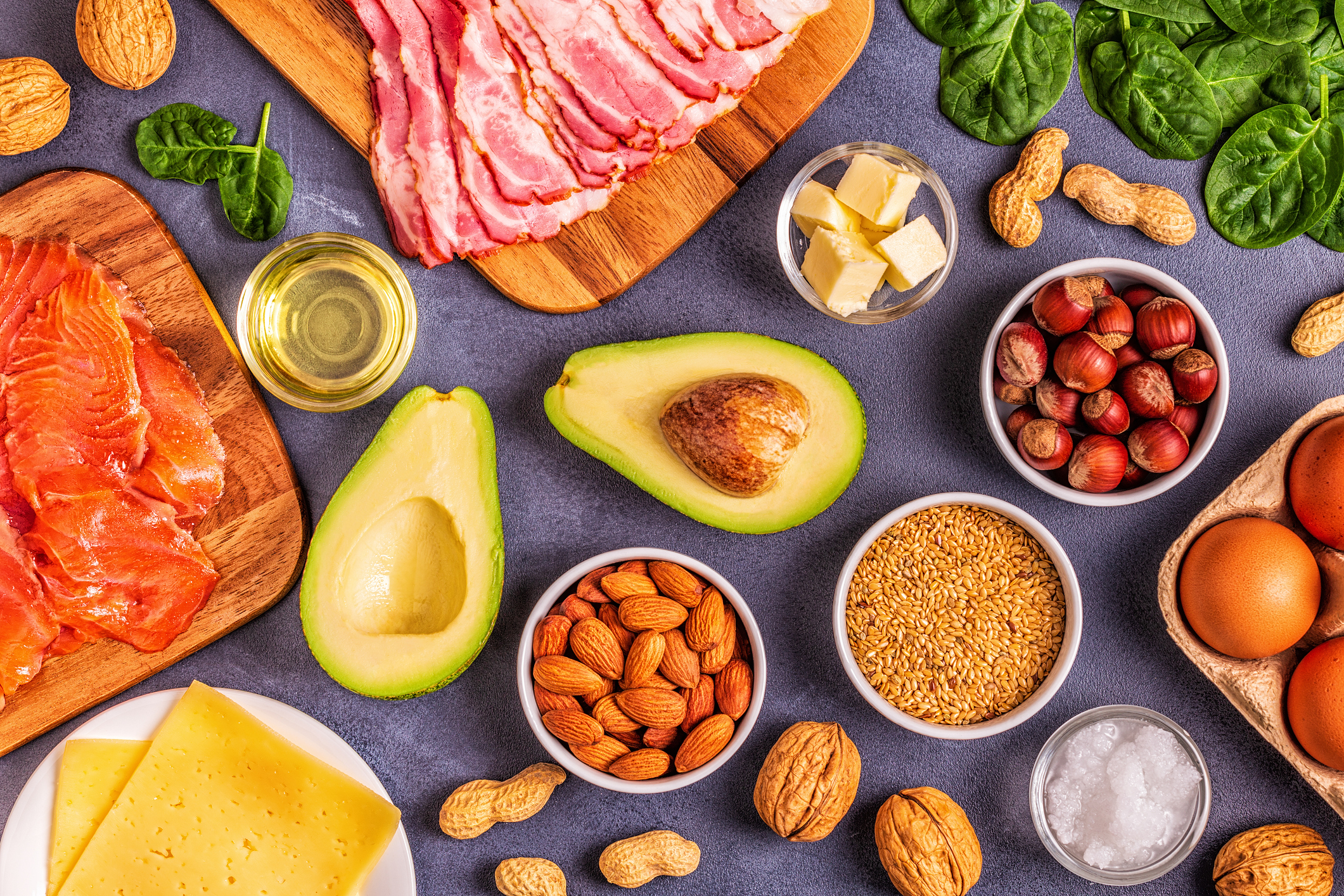Fasting for health has been practiced for ages, but what is lesser known is what happens in the body hour-by-hour without long stretches of food. Read on as we delve into the timeline of fasting and uncover the perks it offers along the way.
The practice of fasting for enhanced health is nothing new – it’s a tactic that dates back centuries. But only recently has research fully shed light on its role as a transformative tool for improving the body’s adaptive cellular responses, bringing with it a slew of powerful benefits. Fasting is shown to reduce inflammation and oxidative damage, support cellular protection, boost mental clarity, and optimize the metabolism of energy. In addition, long-term fasting has the potential to extend our longevity and can help protect us against conditions like obesity, high blood pressure, rheumatoid arthritis, and asthma.
When fasting intermittently, the body progresses through phases of a fed-fast cycle accompanied by metabolism and hormone level changes. While every body responds differently to fasting depending on lifestyle, health status, and genetics, a general timeline of predictable metabolic responses exists as a fast stretches hour by hour. If you’re considering starting a fasting practice, especially one that’s prolonged, it’s recommended to consult with your healthcare provider first to make sure that fasting is safe for you.
Let’s now break down the fasting timeline so that you can get an idea of what your body is actually experiencing at different points throughout your fast. By learning about these stages, you can choose the right type of fast and time span that will work best for your own body and health goals.
Fed state: 0 to 4 hours
During this earliest stage of fasting, your body is still in the process of digesting and absorbing the macronutrients in your last meal, breaking down its carbohydrates, protein, and fats into glucose, amino acids, and triglycerides. It then either metabolizes them for energy right away or stores them in the body for use later on. The contents of a meal will help determine the hormonal activity at play. For example, a large carbohydrate-heavy meal will provide a heap of glucose in the bloodstream which triggers a rise in insulin, a hormone secreted by the pancreas that helps to shuttle glucose into cells for immediate energy production or for the creation of protein in muscle tissue. Glucose that is not directly needed can be stored on a short-term basis as glycogen in the liver and muscles, and is the body’s main form of stored carbohydrates. Glycogen can be converted back into glucose as a source of energy when needed. If the storage of glucose is required for even longer, it is stored in adipose tissue.
The early fasting stage is called an anabolic period or growth period. During this time, the body is busy using the nutrients from the food you just ate to metabolize them for energy, use them for building muscle, or reserve them for later use. Around 3 or 4 hours after your last meal, your insulin and glucose levels tend to stabilize and return to pre-meal levels. The hormones ghrelin and leptin experience fluctuations as well. Ghrelin, known as the hunger hormone, stimulates our appetite by calling out to the brain that we’re hungry. Leptin, on the other hand, does the opposite – it switches our appetite off by signaling to the brain that we’re full. So as we approach the end of our meal, our ghrelin levels fall while our leptin levels rise.
Although a fed state is generally considered up to 4 hours after a meal, the actual amount of time your body stays in the fed state depends on the nutritional content of your food and how much of it you consume.
Early fasting state: 4 to 16 hours
The next phase of fasting, the early fast state, lasts between 4 and 16 hours from your last meal during which the body transitions to a catabolic state. During the catabolic state, the body breaks down the previously-stored nutrients and puts them to use. Once insulin and glucose levels drop back down to pre-meal levels, the hormone glucagon kicks into gear, stimulating the breakdown of glycogen back into glucose for energy. The body breaks down just enough glycogen to keep blood glucose levels in the normal range, hovering around 70 to 120 mg/dL. As you approach the end of this phase, the body will progressively run out of glycogen stores, prompting it to seek another energy source – fat.
Triglycerides from fat cells are broken down into fatty acids and then into smaller molecules called ketone bodies during a process called lipolysis. Around the 16-hour fast mark, ketone bodies are used up for energy. Three types of ketones are generated: acetone, acetoacetate, and β-hydroxybutyrate (BHB).
“Ketosis” refers to the state of fat oxidation, or fat breakdown into usable, alternative energy from ketones that power the heart and skeletal muscle when glucose isn’t readily available. Also, the brain naturally uses around 60% of available glucose for fuel when the body is resting, but likewise turns to ketones for fat oxidation to partially replace the glucose when it’s in short supply. The ketones generate less inflammation than glucose while being metabolized and reduce the death and damage of cells in brain neurons, both responsible for the mental clarity and positive mood experienced by those who fast.
Fat oxidation can be reached directly through fasting but can also be reached by following a diet with a deficient intake of carbs. Achieving this state is thought to be responsible for the many benefits commonly seen in those who fast. Fat oxidation optimizes the way our body uses energy by enhancing its ability to deliver it. This helps bolster our body’s ability to fight disease and better take on our daily stressors. As mentioned, how quickly you get to a fat oxidation state will depend on what your food was composed of and how much of it you ate. So, eating a few large meals rich in carbohydrates and starches will result in a long time to achieve glucose depletion and fat burning than eating meals that emphasize fats and protein.
Fasting state: 16 to 48 hours
After 16 to 18 hours of fasting, the glucose in the cells and glycogen in the liver and muscles have been substantially depleted. The body switches to fat-burning mode by breaking down fat stores for energy – and a good amount of energy is still needed for all of your usual daily tasks like waking up, walking, working, and even exercising. It’s helpful to see exactly how your body is oxidizing fat throughout the day, and it is possible to do so non-invasively by using a Biosense® breath ketone monitor. Biosense® is a clinically-backed handheld device that shows you just how effectively your body is using fat for fuel in response to the healthy behavioral changes you’re making.
Around 24 hours, another chemical called AMP-activated protein kinase (AMPK) is triggered, stimulating greater autophagy to occur all around the body. Autophagy is the critical process in which defective components within the cell are broken down and removed. In other words, autophagy is essentially a spring cleaning for your cells, getting rid of damaged or dead cell material that can contribute to aging and diseases like cancer, diabetes, infections, autoimmune disorders, Alzheimer’s disease, and heart disease. Autophagy’s functions are also vital for the body’s regulation of energy balance between food intake and energy expenditure.
As autophagy is triggered around the 24-hour mark, your brain also gets a boost with an uptick of brain-derived neurotropic factor (BDNF) production. BDNF is a protein in the brain and spinal cord that promotes the growth and maintenance of nerve cells and the communication between them, crucial for long-term memory, coordination, and learning.
Long-term fasting state: 48 to 72 hours
Around 48 hours after food intake, your body enters the long-term fasting state, sometimes referred to as a “starvation state.” During this time, insulin levels continue to drop while ketone bodies continue to rise. Ketones are now providing fuel for the brain. Although carbohydrates from food are no longer available, the kidneys can produce glucose for any of the brain’s additional energy needs using a process called gluconeogenesis.
To help conserve muscle tissue in the body, the breakdown of three essential amino acids, called branched-chain amino acids, is reduced. At the same time, ketones promote the secretion of growth hormone. This results in growth hormone levels up to five times higher than when the fast first started, aiding in the body’s ability to repair its cells, preserve lean muscle mass and helping to boost its strength, muscle growth, and exercise performance.
By 54 hours, insulin levels have dropped to their lowest level since the beginning of the fast, making your body more insulin-sensitive. Higher insulin sensitivity is linked with several benefits, including an increased rate of autophagy and lower inflammation. It also makes you less prone to developing type 2 diabetes and other chronic age-related diseases.
72+ hours
Fasting for three or more days puts your body into a deep state of ketosis, with autophagy and fat oxidation kicked into full gear. While an extended fast is not recommended for everyone and should be practiced under the guidance of a medical provider, research shows that for healthy people, fasting for 72 hours or longer is generally safe, well-tolerated, and is associated with many health benefits. For example, prolonged fasting can boost the body’s resilience to stress and exposure to toxins.
It can also lead to weight loss. For example, one 2019 study from PLOS One followed 1,422 subjects on an extended-fasting program, with fasts lasting between 4 and 21 days, over 12 months. At the end of the study, each subject demonstrated the metabolic switch to ketone energy utilization, which resulted in significant reductions in weight, blood pressure, abdominal circumference, and blood glucose levels. Interestingly, most subjects reported increased emotional and physical well-being, and 93% claimed they did not experience any hunger during the program.
Another benefit of prolonged fasting is better mental performance. All types of fasting result in the production of ketones but fasting for longer moves the needle faster and further, and higher ketone levels mean even greater cognitive function. One Psychopharmacology study confirmed this premise, showing that more plasma ketone bodies seen among 19 elderly adults contributed to positive impacts on visual attention, task switching, and working memory.



